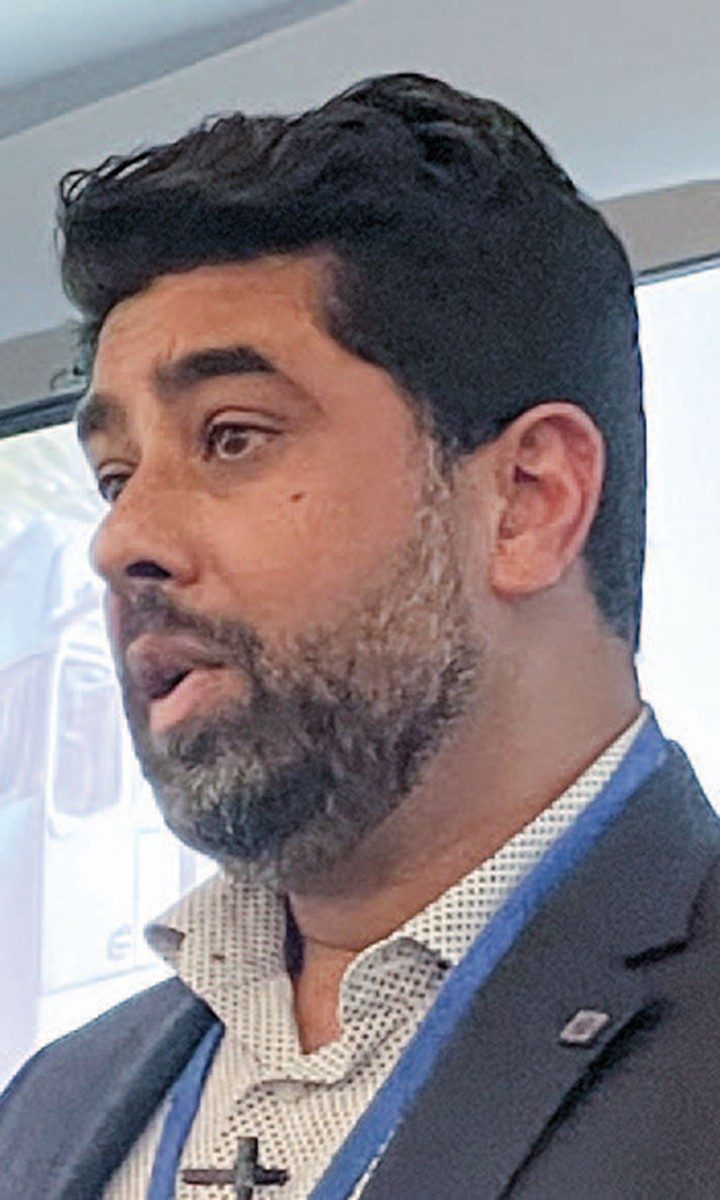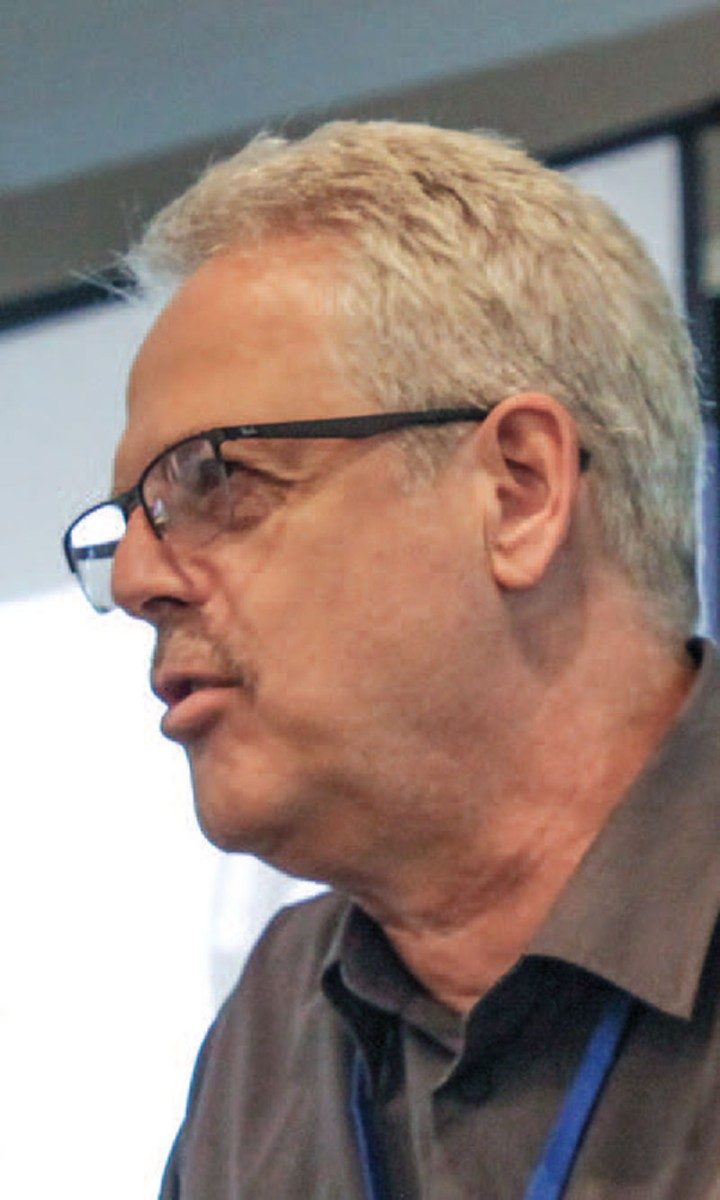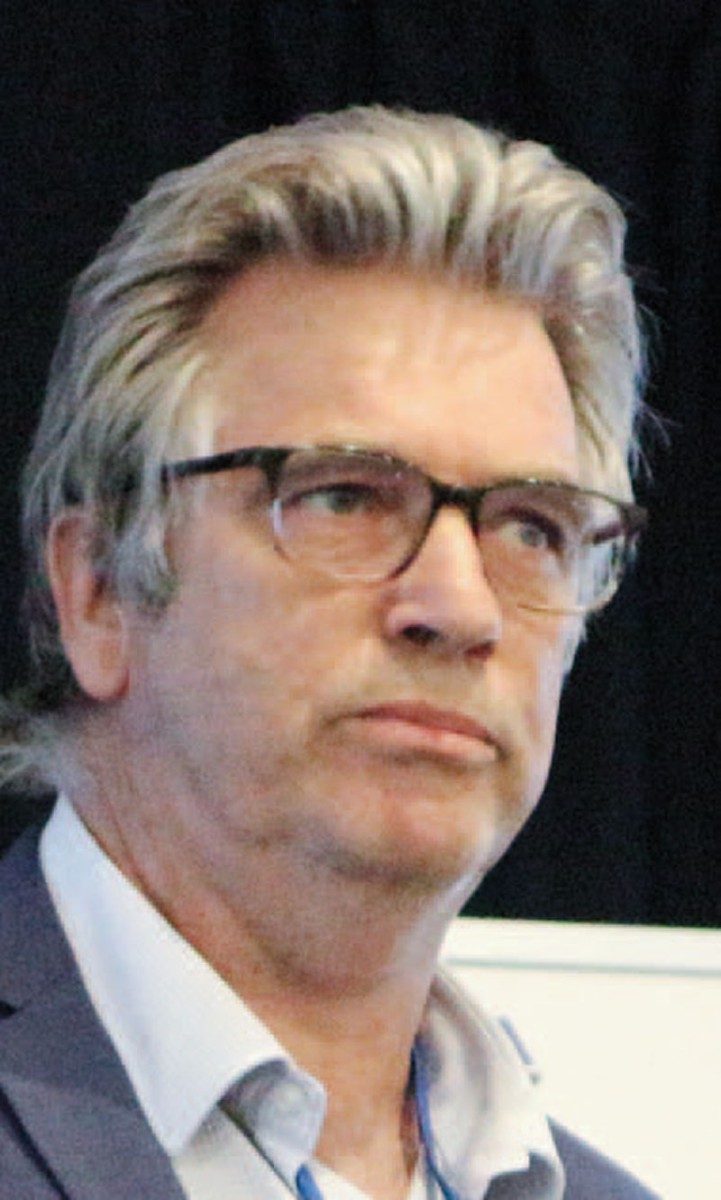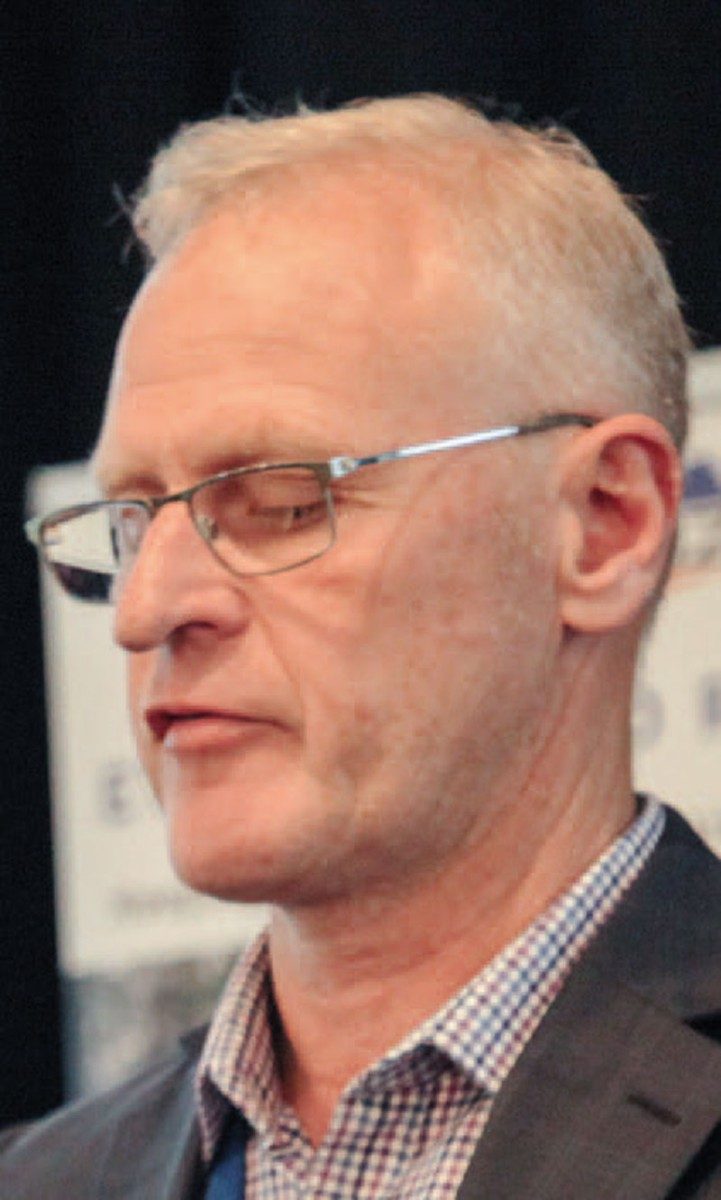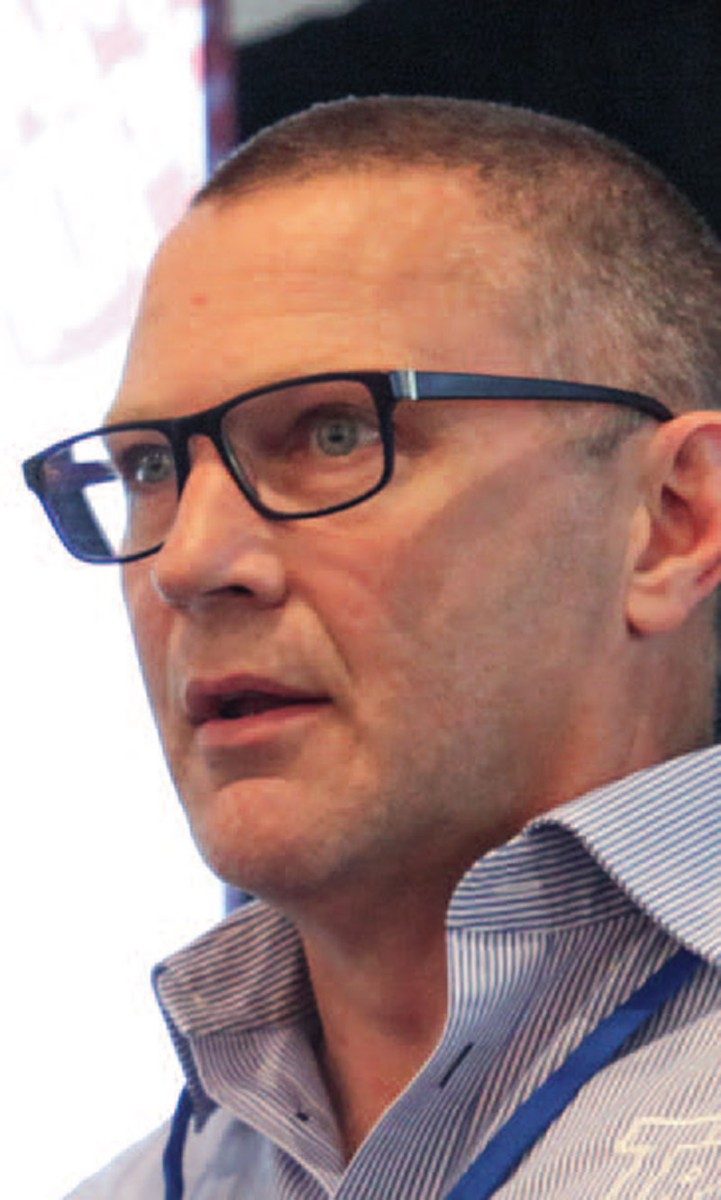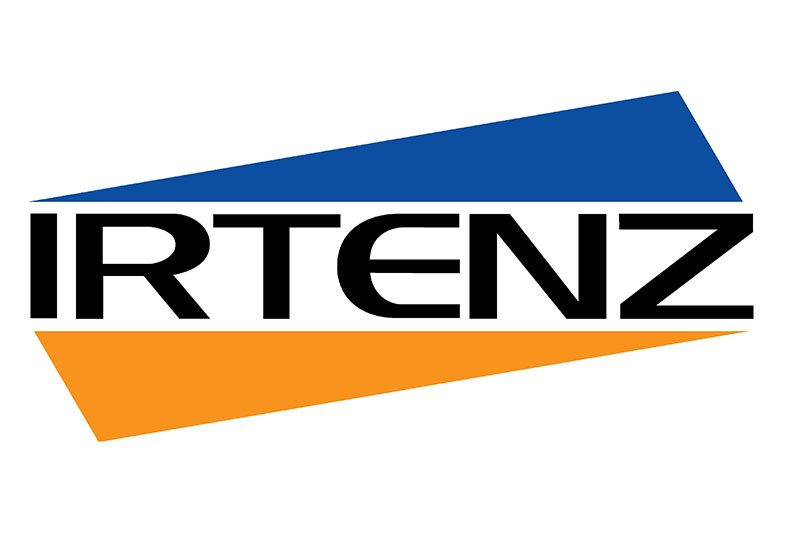IRTENZ Conference 2022
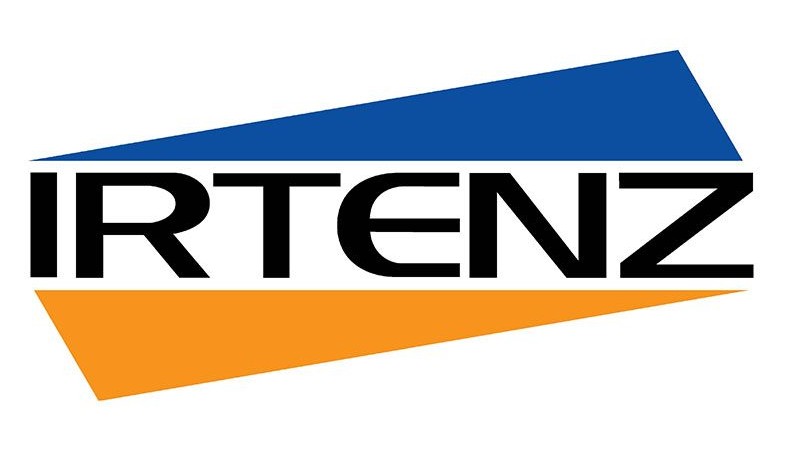
In opening the conference, IRTENZ president Chris Carr said the industry has dealt with revolution before, moving from horse-drawn wagons to the internal combustion engine. Back then the move was driven by technical innovation, but today’s driving forces were quite different, and the industry had no option but to adapt.
“The diesel engine is hugely refined and a fantastic tool that has carried us through our lives, but now that evolution is going to stop,” said Carr. “Operators need to be willing to accept the change and cannot stand back and be reactionary. The choice has already been made, and we need to be positive about what’s coming.”
Carr reiterated the need for government and council support. “Things like truck tare weights are going to get heavier. If we can’t increase our gross loads, there will be a resulting productivity loss. We are not going to get the configurations we need [in New Zealand] because that kind of engineering isn’t going to be available to us in the early stages because production will be centred around mass markets – and we aren’t one. So, there will be a lot of compromise.”
OEMs: Current and long- term options
The first panel discussion featured presentations by seven OEM and industry representatives, who each discussed their respective activities, plans and experience in the face of ‘revolution’.
Giving the keynote address and representing Daimler Truck Australia Pacific was Romesh Rodrigo, senior manager, VPC, homologation and regulatory affairs.
“The transition ahead is significant. We need to turn around 100 years of technological development. It’s not something one OEM can deliver. It will be collaborative – that’s important to meet the expectations our customers have placed on us,” he began.
Rodrigo said that converting today’s activities to zero-emission vehicle (ZEV) technology couldn’t just be done. “Governments are signing up to lofty aspirations, but we need to have a plan. Some of these vehicles don’t even exist. It might be an intermodal solution; we must look at it on an overall basis. It’s also important to understand we’re not talking about absolute zero – net zero means there will be a trade-off.”
In developing ZEV technologies, Rodrigo said it was important for new and legacy OEMs to support each other. “There can’t be any sort of catastrophic accident. A loss could set this transition back immensely.”
Whether battery electric (BEV) or hydrogen fuel cell (FCEV), Rodrigo suggested operators start looking now at how these vehicles could fit into their businesses, what infrastructure was required and how these vehicles could be supported. “Selling it is one part, but the industry runs on serviceability. All that must be considered.”
While Daimler Truck is well advanced with BEVs such as the eCanter and eActros coming to market, Rodrigo said the company was also pursuing FCEVs.
“Hydrogen is not new to us in transport. If this tech wasn’t safe, we would not put it into buses, which carry the most valuable commodity – people.
“Hydrogen gas has its place, but we’re looking to develop liquid hydrogen for transport – it will be key to move energy around in bulk. It takes a lot of time to develop the vehicles and the support around them. We know linehaul vehicles need to recover quickly, refuelling in 10 minutes is important. We need to know how to practically apply the tech to deliver the outcome customers are expecting.”
Rodrigo said a discussion on infrastructure was important. “Green energy is key here to reduce the whole cycle to zero-emission. This part of the world is well-placed to support that. There is huge potential in this part of the world if we can start generating the renewables. As a region, how can we start supplying this fuel to the world? Exporting can help justify the investment in infrastructure. Energy security is such a key consideration.”
Rodrigo was joined by Kevin Smith, general manager, Fuso NZ. Smith said Daimler Truck had committed to offering a strong ZEV portfolio across all market segments by 2027.
“Europe will see a crossover from internal combustion in 2030, but it’ll be sometime after that for us. New Zealand has to wait its turn in the cycle,” said Smith.
With 30% ZEV sales in New Zealand required by 2030, Smith cited the Fuso eCanter as an example of the transition taking place. “We’re down the path – more trucks are coming in the near future,” he said.
Maarten Durent, managing director of Southpac Trucks, said that sight shouldn’t be lost of the huge emissions reductions achieved as diesel moved to Euro-6 technology. However, he said the industry was now working towards the ‘iPhone’ of trucks.
“All OEMs can see the perfect ‘iPhone’ product in a truck, but legislation is going to bring it on. The industry isn’t going to plunge down that track until forced. High volume is needed to get the costs down,” he said, adding that this was only likely to happen after 2030, once significant change had occurred in Europe.
Durent suggested New Zealand had a more progressive view. “New Zealand is ahead of the game but doesn’t move the needle… We have a willing transport industry that wants to move forward faster than the rest of the world.”
He said internal combustion running on hydrogen could be a good interim measure as vehicles and supporting infrastructure were developed. “What’s useful about that platform is that all the bolt-on ancillaries currently driven off the engine still work.” He suggested HCEVs would be the perfect truck long term.
“Transmissions will go, we’ll see weight savings and service issues disappear. Technology such as fully integrated eAxles will also come in and roll over to trailers,” said Durent, adding that the most affordable solutions would be OEM-built.
Alfons Reitsma, senior product engineer at Scania New Zealand, said Scania had a relatively simple vision of transport – to be as energy-efficient as possible no matter the fuel. He also said that the industry was missing immediate gains to be made with internal combustion in the interim.
“Any solution will take time, but we can bend the curve of CO2 if we start with current alternatives – we need biofuels, drop in diesel – there’s little to change other than what’s in the tank. They can all give reductions in emissions today, but we’ve skipped them.”
Reitsma said Scania’s perspective was that electricity was the most efficient form of transport. “We’re not anti-hydrogen, but BEV at the moment is the most efficient to get most of the energy to the ground with minimal losses, compared with FCEV technology.”
In introducing BEVs to the market and citing the first two electric Scanias on the road in New Zealand with Reliance Transport, Reitsma said that spec’ing trucks in the future would need to be done more precisely, especially regarding axles.
“All areas need to be configured from an energy perspective now, not a pavement perspective. Europe allocates a two-tonne offset. It doesn’t matter the axle group or combination, and there are no problems or no payload losses. In New Zealand, that would create all sorts of issues. VDAM needs to be reviewed not only to save the pavement but also energy. That’s critical in the transitional period and we all need to be on the same page delivering that message to the New Zealand government.”
Like Durent, Reitsma suggested getting started on electric trailer axles now to take advantage of their efficiency gains.
Grant Doull, national manager, hydrogen and eco commercial vehicles at Hyundai Truck and Bus New Zealand, echoed Durent’s sentiment that volume was key. “Being one of the biggest manufacturers in the world opened up volume for Hyundai. Hyundai is hugely invested in achieving New Zealand’s CO2 reduction goals and said he believed both BEV and FCEV would play roles. “Hyundai is moving fast and has invested billions into the hydrogen economy.”
With New Zealand the second global market to receive the Hyundai Xcient FCEV, Doull said that local engineering would have a place in the future. “Hyundai wasn’t planning on right-hand drive vehicles until 2025. We said, ‘Leave that to us.’ It blew my mind what our local engineers could do with the challenge. The best place for us to start learning was to just get into it.
“We’ll be faced with creating solutions for New Zealand based on product developed for volume markets. We need to work out how to maximise our productivity based on wherever those products’ mass markets are coming from,” Doull added.
Echoing Reitsma, he said: “Government says they’re willing participants, but we’re still to see evidence of them addressing VDAM. That needs to be addressed before this all comes in long term.” Doull warned that there was a 10-year road ahead “before we’re really in the thick of it”, and now was the time to get on board. “We need industry collaboration, trucks on the roads, demand investment to get volume and prices down, and make the transition in a sensible manner.”
Practical local experience
Brendan King, general manager at TR Group, said the drive to decarbonisation was on and gaining momentum.
Referencing TR Group’s own trials of 50 BEVs currently in operation, King said the industry needed to work together and learn the limitations and advancements of the technology.
“They do work, and they come with numerous advantages. They’re reliable and cheap to run, and reliable from a repair point of view. However, there are limitations…
“The high capital costs are not offset by low operational costs, and we still need to see how long they will last for total operating cost. Diesel trucks are currently still cheaper.”
King added charging was a huge issue. “The infrastructure is limited – which is the biggest limitation to EV adoption. Upgrades to electricity infrastructure comes at a huge cost – government needs to sort that out,” King said.
Again, King added his voice to the need for the government to address axle weights.
He said TR Group had 23 FCEVs on order, which would offer a 500km range and refuel in the same time as diesel. “We have confidence they’ll go well,” he said.
As for the future, King suggested BEVs and FCEVs would complement each other. “The technology exists; none of it is new. The current focus needs to be on getting onto mass production and getting costs and TCO down. It’s a big job for OEMs and takes time and money.”
Finally, King suggested moving to Euro-6 trucks offered a 95% increase in efficiency over Euro-3. “That’s significant. Operators can also focus on their drivers’ fuel efficiency to save fuel and emissions – one litre of diesel equals 2.68kg of CO2 saved.”
IRTENZ would like to thank the sponsors of this year’s conference:
Fruehauf
Fruehauf NZ is dedicated to delivering innovation and outstanding service for the road transport industry. Through our solutions in customised design and manufacture, modification, second-hand sales, repairs and maintenance, we help customers to improve the productivity and profitability of their transport operations. On the road, the distinctive Fruehauf brand complements our customers’ drive to deliver safely, and to the highest standard. Our solutions encompass customised design and manufacture; repairs, rebuilds, and refurbishment; maintenance and parts service; advice on regulatory compliance; and engineering- led innovation. With 35 models, we offer New Zealand’s widest range of new trailers and truck bodies and are continuously innovating to expand this range.
Hendrickson
Hendrickson is a leading global manufacturer and supplier of medium and heavy-duty mechanical, elastomeric, and air suspensions; integrated and non-integrated axle and brake systems; tire pressure control systems; auxiliary lift axle systems; parabolic and multi- leaf springs; stabilisers; bumpers; and components to the global commercial transportation industry.
Intertruck
With more than 100 years of experience, Intertruck recognises the vast differences within global markets, and New Zealand is no exception. As an active member of the Truck Trailer Manufacturer Association and Motor Industry Association, Intertruck understands NZ regulations. Our design team model our range of trucks to every application and to suit our topography and HPMV regulations. Importantly, we care about tare weight.
Under the guidance of Navistar and over a decade of building trucks, Intertruck has earned the reputation for producing the lowest tare weights resulting in the biggest earner in payload. Local assembly provides custom chassis variations to suit tipping bodies, hydraulic blowers, steer axle air suspensions and axle spreads to increase HPMV tables. Our products are backed by comprehensive and competitive warranties through our network of nationwide dealers and service providers.
Jost
JOST New Zealand offers a comprehensive range of advanced technology transport components that are superbly engineered, high quality and suitable for a wide carrier of transport applications. Our team is continuously monitoring the heavy transport industry for new developments, ensuring JOST remains at the forefront of New Zealand transport technology and our products and services are unsurpassed by our competitors.
Tohora Enterprises
Tohora Enterprises offers an advisory service to companies and organisations looking to maximise their value in the heavy transport field by ensuring they are fully compliant at all times at the lowest possible cost. Tohora Enterprises offers a fleet management system development and implementation service to enable transport operators to meet their compliance requirements, improve their ORS and protect their TSL in the simplest and most cost-effective way possible.
Transpecs
Transpecs has supported the New Zealand transport industry since 1953. We are the country’s leading supplier of OEM truck and trailer components and offer a one-stop-shop service to fleets, trailer manufacturers and the new truck sales industry. We specialise in supplying world-class branded products directly to trailer manufacturers and truck-body builders. This is backed up by a nationwide service network providing spare parts and support to all major national and regional transport operators.
TR Group
At TR, we’re focused on keeping trucks and trailers on the road with as little hassle as possible. Why? Because we know that our clients want to focus on their people, their customers and their business rather than running their fleet. We’re dedicated to ensuring that you get quality performance from your heavy commercial fleet – maximising uptime, efficiency, safety, and compliance. We like to think that working with us will improve the performance of your fleet and, consequently, your company’s bottom line.
TRT
Tidd Ross Todd (TRT) is a privately owned, family business, specialising in the design, manufacture, sales and delivery of products and services within New Zealand and Australia’s road transport and construction industries. Our key areas of business include manufacturing, design and engineering, truck and trailer parts, truck and trailer mechanical service and repair, crane sales and service, trailer sales and heavy transport and equipment design and manufacture. Most recently, TRT has become the NZ distributor for Hiab equipment and services and KOBELCO crawler cranes.
Volvo
The first Volvo truck was born in 1928. Since then, we’ve grown to become the largest producer of heavy trucks in Europe. Our reliability is renowned. And it’s underpinned by our three core values – quality, safety and environmental care. We bring each one to life in everything we do.
Read more
IRTENZ Conference 2023 – PBS
0 Comments12 Minutes
IRTENZ Conference 2023
0 Comments12 Minutes
IRTENZ Conference 2023
0 Comments20 Minutes


